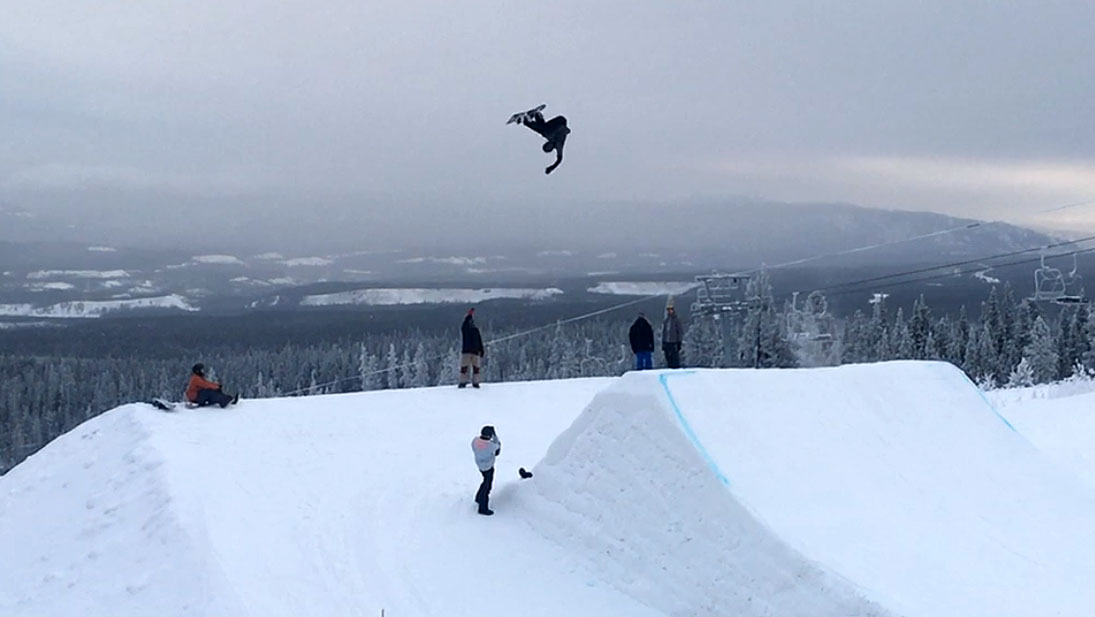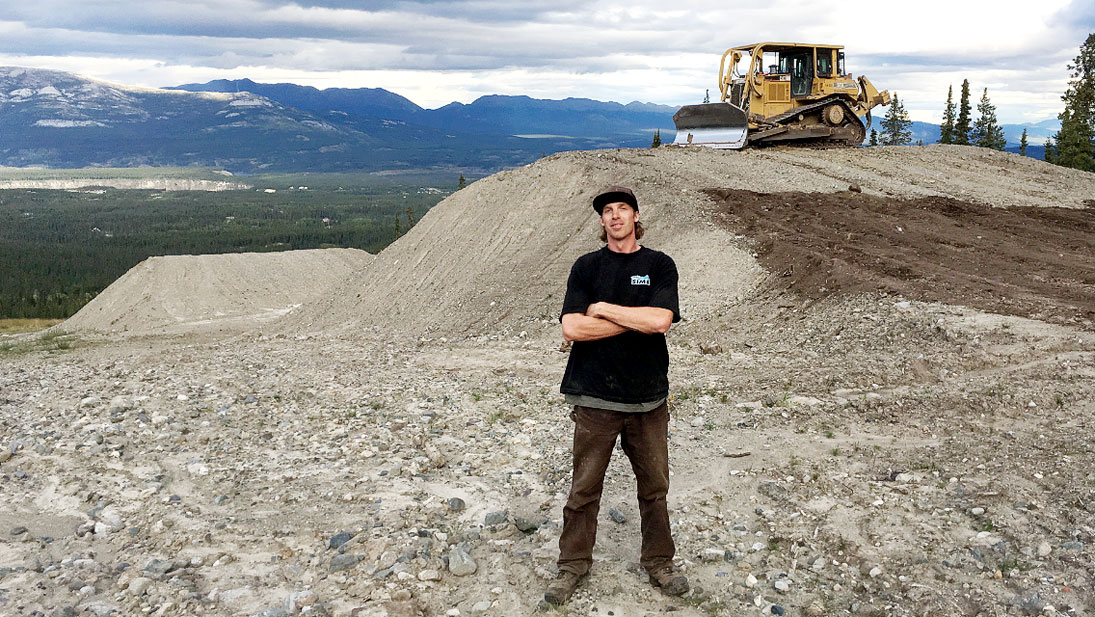Building Mt. Sima’s terrain park
You may have noticed that it is getting a little frigid outside. You may have also seen that there is now some, not a lot, but some snow on the ground.
By John Tonin on November 1, 2018
You may have noticed that it is getting a little frigid outside. You may have also seen that there is now some, not a lot, but some snow on the ground.
If you are like this unprepared, new-to-Whitehorse reporter, snow in October may seem a little daunting. But if you are one of those people who embrace the chilly air and snow you must be getting pretty excited. Especially if you are into say, snowboarding.
As the temperatures at night drop, Mt. Sima has begun making snow in preparation for the upcoming riding season.
Enter Tyler Nichol, the guy who designs and builds the terrain park. The temperatures may just be starting to drop and the big snowfalls still remain on the other side of the mountains, but building the park is a yearlong project.
Growing up in Dawson Nichol first worked in the mines. His experience with the heavy machinery and his ability to manipulate the landscape, are all skills that have helped him in his career as a park builder.
“I started working in the mines in Dawson, where I grew up,” said Nichol. “When I first got to Sima I thought why not make these jumps out of dirt, because making snow is like shooting money in the air. First it’s a lot of brainstorming and drawing at home. Then we start making the terrain park out of dirt.“
Nichol got his start at Mt. Sima in the 2002-3 season; that was the first time he built parks. He worked at Sima for four years up to the Canada Winter Games where he built the half-pipe. Shortly after the Games he was invited to Vancouver to work on the Olympic half-pipe for Vancouver 2010.
Nichol left Cypress, the mountain where the Olympics were held, to work at Mt. Seymour.
“I quickly found out that Seymour was the place to be, so I got recruited to work over there,” he said. “Seymour was family owned, and didn’t have a weird corporate atmosphere like Cypress, who wanted a park but didn’t really care if their park was standout, or exceptional. Seymour was way more creative, they let me do whatever I wanted as long as it was awesome.”
Sick of the rain in Vancouver, Nichol moved back to Whitehorse in 2014, the same summer Mt. Sima declared bankruptcy.
“I thought what am I going to do, I can’t live here if there isn’t a hill,” said Nichol. “So I got involved right away. The parks I am building today I wouldn’t have been able to build four years ago, because the talent level wasn’t ready for it because they hadn’t had good terrain parks.”
As the years have gone by, Nichol has seen the progression of the riders improve. Now he can build features that can challenge the riders but they can still use safely.
“We still have beginner and intermediate parks,” said Nichol. “The stuff I was building last year if I had presented that four years ago kids would be getting broken off, they wouldn’t have known better. But as I have seen them progress, I see that these kids are ready for more, and it’s to the point we can have a modern park. I know the local riders so it’s nice to build within their limits.”
To further challenge the riders Nichol’s will change the layout of the park every year or in season if the conditions allow him too. As well he tries to build something unique, unlike other parks.
“Some mountain’s parks are very straight and very down,” said Nichol. “I prefer a park with more turns and corners, which allows more bowl like features, just stuff that is sort of unique and that stands out, things you won’t find at a lot of the big resorts. Riders will go south and come back and say that Mt. Sima’s terrain park is just as good, or better.”
Sima, a not for profit hill, may not have all the other frills of the bigger parks down south, but it does play to it’s strengths.
“You can never compare us to those mountains (down south) as far as the runs or snow quality, or amount of snow or services and the facilities,” said Nichol. “But when our park is on par with that now all of a sudden we stand out.
“When I moved back I tried to make them realize what they have,” said Nichol. “It’s not a powder destination, we don’t get a lot of snow, we don’t have a lot of runs or interesting terrain. But what we can do is make interesting terrain and create stuff that wasn’t there before. Then year-to-year we can change it without taking any trees down.”
Since Mt. Sima can open earlier than most mountains, it attracts high-level snowboarders like nine-time Winter X-Game medalist and Olympic silver-medalist, Max Parrot and Olympic silver-medalist Laurie Bloin.
“These riders started taking notice because Sima opened early,” said Nichol. “We have a pre-season and it started on the bunny hill and it started as a local function to get kids out sliding rails and boxes. It started getting posted on social media and people were asking ‘where is that?’ We are seeing a lot of amateur next generation snowboarders.”
As the snow, manmade or natural, rolls in, with it will come the riders. Although Nichol has over a decades worth of experience building parks, he still turns to the community for inspiration when building the terrain park.
“When I worked in Vancouver I liked to undercover ask people how the conditions were, how was the snow, and if it was running good, to get good, honest feedback,” said Nichol. “Here it is different because it’s a small community, but we are constantly looking for feedback from the crew at Mt. Sima to all the riders, because it’s easy to say ‘oh this is Tyler’s park’, but really it is everyone’s park.”


Be the first to comment